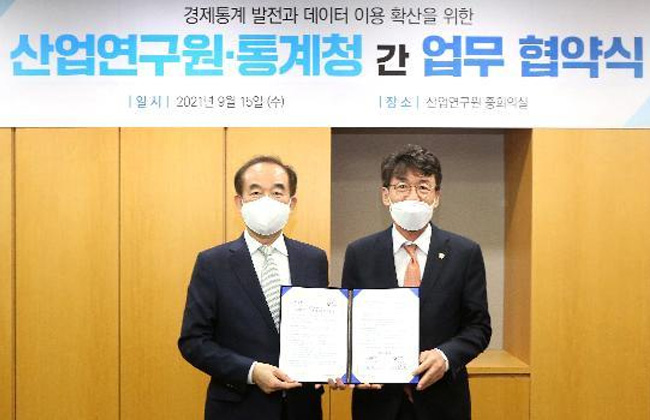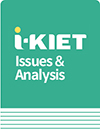i-KIET Issues & Analysis
- The total value of official development assistance (ODA) has steadily grown over time worldwide, and South Korea is no exception. Moreover, Korea is poised to continue to increase its ODA contributions going forward.
- In 2022, countries represented on the Organisation for Economic Co-operation and Development (OECD)’s Development Assistance Committee (DAC) disbursed USD 211.4 billion (0.36 percent of their combined gross national income) in total to ODA, nearly 2.6 times more than the USD 81.2 billion they disbursed in 2000.
- Korean ODA disbursements represent a relatively small share of its GNI, at just 0.17 percent. This places it in 28th place among the 30 countries on the DAC, and the country is under growing pressure to increase its contribution.
- Industrial ODA has been identified as a pathway to facilitating the sustainable and self-sufficient economic development in developing countries.
- Industrial ODA consists of activities that mutually benefit both recipient countries in need of industrialization
- Recently, industrial ODA has come to account for an increasingly larger proportion of Korean ODA and the Korean government is looking for ways to diversify ODA target sectors beyond the energy and communications fields that are the traditional recipients of such ODA.
- Germany and Japan, both global manufacturing powers, are leaders in industrial ODA as well. Korea has the strongest presence in communications ODA; Australia is strong in the mining sector, and the US leads trade ODA.
- However, the global economy is in the midst of a polycrisis. Major issues in every sector worldwide have prompted a paradigm shift in industrial ODA. In calling for an adjustment to this new paradigm, this report outlines an updated industrial ODA strategy: Industrial ODA 2.0.
- The Korean Ministry of Trade, Industry and Energy (MOTIE) has announced plans to reform its industrial ODA programs to emphasize supply-chain, green, and technological ODA.
- These different areas of industrial ODA should be combined to enable developing countries to better deal with the global polycrisis, and also to strengthen the resilience of their industries and trade.
- The Korean government should expressly include supply-chain and trade ODA in its country partnership strategies (CPS).
- A system needs to be established in the long run to ensure effective performance management, monitoring, and evaluation in industrial ODA.
- The Korean government also needs to actively cooperate with the private sector to seize and develop new ODA opportunities, expand the Korean ODA ecosystem, and maximize the intended effects of its ODA activities.
Please enter the security text below
to prevent email collection
Please check the information of the person in charge.
연구과제 제안이 접수되었습니다.
신청이 접수되었습니다.


View Summary
코로나19 발생 이후 대부분의 고용 관심사가 항공 및 여행서비스, 음식·숙박 서비스 등 주로 서비스 업종에 집중된 상황에서 본 연구는 최근 그 중요성이 강조되고 있는 제조업의 고용변화를 살펴보았다. 분석에 따르면, 코로나19 이후 제조업 고용은 비교적 큰 충격 없이 빠르게 회복하는 모습을 보이고 있다. 제조업 고용은 서비스업에 비해 큰 충격 없이 유지되고 있고, 코로나19 직후 2020년 상반기에 약간 하락하였지만 하반기부터 회복 추세를 보이고 있으며, OECD 주요국의 제조업과 비교하여도 일본과 함께 고용 충격이 비교적 작게 나타나고 있다. 그러나 전반적으로 양호한 고용 성적에도 불구하고 제조업 내 특성 별로는 차이가 나타나는 것으로 보인다. 종사상 지위 별로 보면, 임시·일용직, 고용원이 있는 자영업자에서 고용 충격이 상대적으로 크게 나타났고, 상용직과 고용원이 없는 자영업자는 큰 충격이 없는 것으로 나타났다. 제조업 규모별로는 300인 이상의 경우 코로나 발생 초기 약간의 충격 이후 고용이 빠르게 반등하면서 코로나 이전보다 고용이 더 증가한 반면, 이보다 작은 규모의 제조업체들의 경우 고용 회복이 더디게 나타나고 있다. 고용의 중장기, 단기 추세선을 비교한 결과 제조업 업종에 따른 차이를 보였다. 코로나 발생 이전 3년간의 추세선을 2020년 1월부터 연장한 선과, 2020년 1월부터의 실제 자료를 이용한 단기 추세선을 비교한 결과, 의약품은 코로나19 발생 이전부터 시작하여 코로나19 발생 이후에도 견조한 증가세를 유지하고 있으며, 전자부품·컴퓨터, 기타운송장비, 가구는 코로나19 이후 오히려 고용 추세가 개선되었다. 그러나 다수 업종은 코로나 발생 이후 고용이 하락하였는데, 특히, 비금속광물, 1차금속, 금속가공 분야나 인쇄·기록매체 업종에서 하락이 상대적으로 크게 나타났다.
The following information is provided.
inform@kiet.re.krPlease complete the CAPTCHA below.
[전지적키에트시점] (Eng sub)심상치 않은
국내 대기업 움직임??
KIET 시점에서 보는 미래 로봇 산업 전망은
어떨까요?
경제전문가가 알려드립니다!
(산업연구원 박상수 실장)



